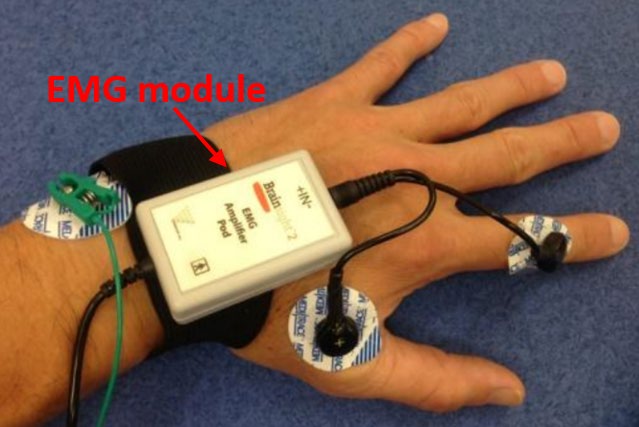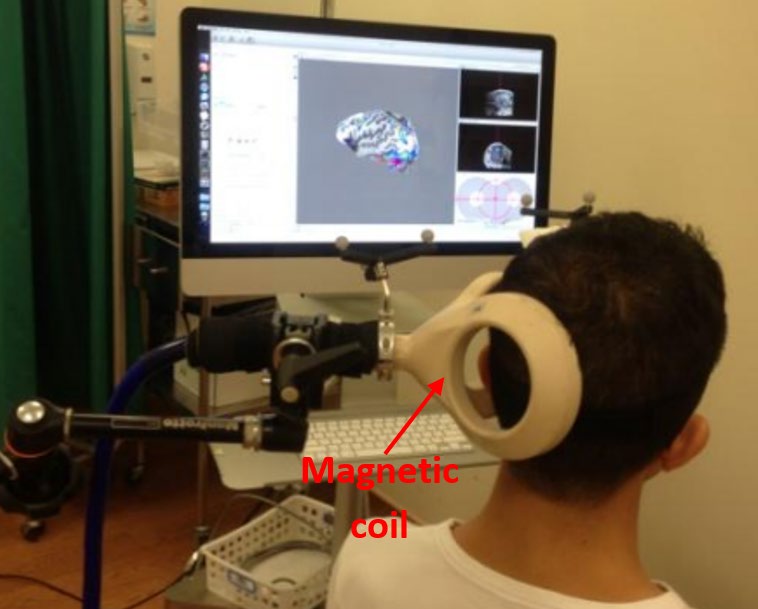Transcranial Magnetic Stimulation
What is TMS?
TMS (Transcranial Magnetic Stimulation) is a non-invasive and painless tool that modulates neural activity. It works on the principle of Faraday’s law of electromagnetic induction. In TMS, an electromagnetic coil sends a perpendicular magnetic field into the region of interest on the scalp. This field indirectly influences neuronal activity. TMS has been shown in some cases to induce cortical excitability and in some cases to depress excitability. TMS can be administered in bursts at a rhythmic frequency (repetitive TMS) or as a single pulse. Repetitive TMS has been shown to have a greater and lasting effect. Depending on the question, rapid or slow repetitive TMS can be administered.
How is TMS Done?
An electromyography (EMG) module is first attached via a wristband and by pasting electrodes onto the participant.

After setting up the parameters, an experimenter positions the magnetic coil above the participant’s scalp, over the region of interest. When activated, a high-current pulse is produced in the TMS coil, inducing a perpendicular magnetic field. As high-current pulses are sent through the coil, the participant may hear clicks.

What is TMS used for?
TMS can be used to treat clinical conditions (such as drug-resistant depression) or be used as an experimental technique to understand brain functions. In our lab, we are applying fMRI-guided TMS to target regions of the brain to determine its involvement in various cognitive networks. We are also combining it with EEG to understand neuroplasticity.